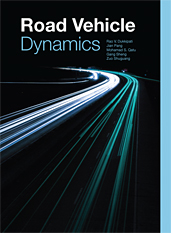Technical Paper
Whole Field Bonded Steel Tensile Test Using Digital Image Correlation System
2010-04-12
2010-01-0960
Adhesive bonding has many applications in the automotive industry. The single-lapped bonded joint is the most typically used among various bonding types. This paper presents experimental research for determining the strain field of the single-lapped joint under tensile loading. The materials for the joint are epoxy-based structural adhesive and low-carbon electrolytic zinc steel plate. In the study, a DIC (digital image correlation) system was adopted to measure the strain distribution of the bonded joint during a tensile test. The bonded steel coupons in the tensile test were prepared according to the ASTM standard. During the measurement, images of the coupon joint were taken before and after the deformation process. Then the DIC system measured the strain of bonded joint by comparing two consecutive images. The measured data from the DIC was compared to data taken simultaneously from a traditional extensometer.


